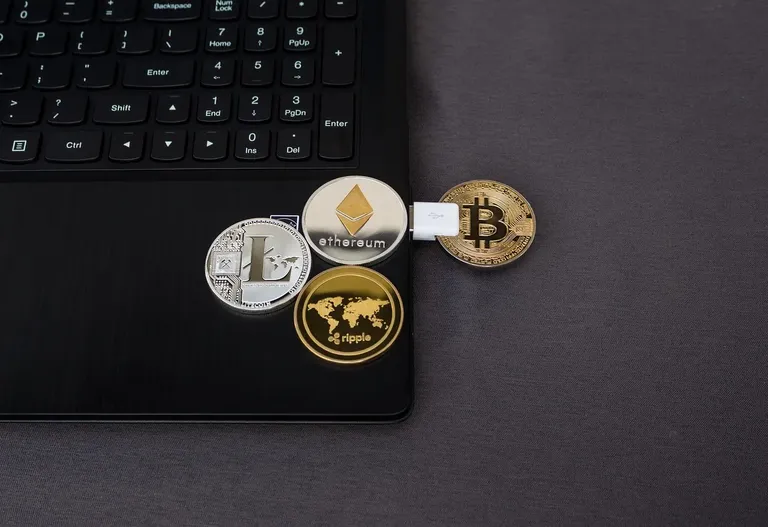What Is Digital Currency? Types, Use Cases, Legal Status, Risks & Future

What is Digital Currency?
Digital currency is a monetary asset represented electronically and stored in software-based systems, rather than as physical banknotes or coins.
Digital currencies use computer networks, cryptographic security protocols, and digital wallets to record, store, and transfer financial value. The macro context of digital currency involves the evolution of monetary systems toward programmable, decentralized, or centrally regulated financial instruments, depending on the issuing authority.
According to the Massachusetts Institute of Technology (MIT) Digital Currency Initiative, digital currencies operate on a digitally native infrastructure that enables near-instant peer-to-peer value transfer, bypassing traditional banking intermediaries and reducing transaction latency to under 10 seconds in most networks (MIT DCI, 2023).
3 Main Characteristics of Digital Currency:
No Physical Form: Digital currencies exist only on electronic networks. They are not issued in paper or coin format.
Device-Dependent Access: Users access digital currency via hardware wallets, apps, or blockchain addresses.
Ledger-Based Validation: Transactions are stored on centralized databases (for CBDCs) or distributed ledgers (for cryptocurrencies).
There are three core types of digital currencies, each defined by its issuing entity and underlying structure:
Types of Digital Currency:
Cryptocurrency: A decentralized digital asset secured by cryptography and verified via blockchain consensus protocols. Examples: Bitcoin, Ethereum, Solana.
Central Bank Digital Currency (CBDC): A sovereign digital currency issued by a central bank as legal tender. Examples: Digital Yuan (China), Sand Dollar (Bahamas), eNaira (Nigeria).
Virtual Currency: A platform-specific medium of exchange not tied to a central authority. Examples: Roblox Robux, Meta Credits, World of Warcraft Gold.
According to a 2024 report by the Bank for International Settlements, 134 countries representing over 98% of global GDP are currently exploring or piloting CBDCs, with 19 G20 countries in the advanced development stage.
Digital Currency vs Traditional Currency: | ||
Feature | Digital Currency | Physical Currency |
Form | Electronic | Paper/Coin |
Storage | Wallet apps, blockchain addresses | Cash vaults, bank accounts |
Issuer | Central banks or decentralized networks | Central banks and government mints |
Transfer Speed | Instant (within seconds) | Minutes to days (depending on system) |
Intermediaries | Optional (peer-to-peer possible) | Mandatory (banks, payment processors) |
Programmability | Yes (via smart contracts) | No |
Traceability | Full ledger transparency | Limited (depends on reporting) |
Exchange Limitation | Cross-border usable with fewer restrictions | Regulated by domestic capital controls |
Digital currency is a software-based medium of exchange with no physical form, allowing programmable, borderless, and traceable transactions through decentralized or centralized systems. It includes cryptocurrencies, CBDCs, and virtual assets, forming the foundation of the digital monetary ecosystem.
How Does Digital Currency Work?
Digital currency works by recording, verifying, and transferring monetary value electronically through cryptographic protocols or centralized databases.
All digital currencies operate via a digital infrastructure layer that replaces physical cash logistics with programmable, network-based computation. The core workflow includes issuance, storage, validation, and transfer using systems such as blockchains, distributed ledgers, or centralized server architectures.
4 Core Processes in Digital Currency Operation:
Issuance Mechanism
Cryptocurrencies are minted through algorithms (e.g., Bitcoin's SHA-256 Proof-of-Work), while CBDCs are issued by central banks using sovereign monetary controls.Storage Medium
Digital assets are stored in software wallets—either custodial (hosted) or non-custodial (self-managed)—secured by encryption keys, seed phrases, or biometric identity systems.Validation Protocol
Cryptocurrencies use decentralized consensus algorithms like Proof-of-Work, Proof-of-Stake, or Delegated Proof-of-Stake.
CBDCs use permissioned ledgers with node-based verification managed by regulated financial institutions.
Transfer Execution
Transactions are executed peer-to-peer or account-to-account by broadcasting instructions to the network. Once confirmed, the updated ledger reflects new ownership within seconds.
According to a 2023 study by the University of Cambridge Centre for Alternative Finance, 91% of cryptocurrency networks achieve settlement finality in under 60 seconds, while retail CBDC pilots such as the Bahamas' Sand Dollar record confirmation times under 5 seconds.
Digital currency functions as programmable value operating through verified digital instructions and cryptographic storage systems, enabling secure, fast, and traceable financial transactions across public or private networks.
What are the Types of Digital Currency?
There are three primary types of digital currency: cryptocurrency, central bank digital currency (CBDC), and virtual currency. Each type is defined by its issuing authority, technical infrastructure, and regulatory framework.
1. Cryptocurrency
Cryptocurrency is a decentralized digital asset secured by cryptographic algorithms and recorded on distributed ledgers.
Cryptocurrencies operate without central authority, using blockchain technology and consensus mechanisms such as Proof-of-Work (PoW) or Proof-of-Stake (PoS) for validation.
According to the University of Zurich Blockchain Center (2023), over 24,000 cryptocurrency tokens exist, with Bitcoin, Ethereum, and Solana accounting for over 75% of total market capitalization.
Key Attributes:
Issuer: Protocols (not governments)
Ledger Type: Public blockchain
Supply Control: Algorithmic (fixed or inflationary)
Transfer Speed: 3–20 seconds (avg for Layer 1 chains)
Examples: Bitcoin (BTC), Ethereum (ETH), Cardano (ADA), Dogecoin (DOGE)
2. Central Bank Digital Currency (CBDC)
CBDC is a sovereign digital currency issued and regulated by a national central bank as legal tender.
CBDCs replicate fiat currency functionality in digital format, enabling monetary policy control, traceability, and financial inclusion. They use either account-based or token-based models and operate on permissioned ledgers.
As of 2024, data from the Atlantic Council CBDC Tracker confirms that 134 countries, including the United States, China, India, Brazil, and Sweden, are in various stages of CBDC development or pilot deployment.
Key Attributes:
Issuer: Central banks
Ledger Type: Permissioned DLT or centralized database
Legal Status: Legal tender
Privacy Level: Controlled by regulatory frameworks
Examples: eNaira (Nigeria), Sand Dollar (Bahamas), e-CNY (China)
3. Virtual Currency
Virtual currency is a non-regulated digital unit used within specific platforms or ecosystems.
Unlike CBDCs and cryptocurrencies, virtual currencies are not backed by fiat reserves or decentralized ledgers. They exist within closed environments such as games, social networks, or loyalty programs and have limited or no exchangeability with real-world currencies.
Key Attributes:
Issuer: Private companies or platform operators
Use Case: Internal transactions, rewards, access tokens
Convertibility: Usually non-convertible to fiat
Examples: V-Bucks (Fortnite), Robux (Roblox), Meta Credits (Meta)
Comparative Table of Digital Currency Types | |||
Attribute | Cryptocurrency | CBDC | Virtual Currency |
Issuer | Decentralized protocol | National central bank | Platform operator |
Regulation | Market-driven, limited compliance | Fully regulated by law | Unregulated or partially governed |
Ledger System | Public blockchain | Permissioned DLT / centralized system | Internal database |
Convertibility | High liquidity across exchanges | 1:1 fiat conversion | Often non-convertible |
Legal Tender | No | Yes | No |
Examples | Bitcoin, Ethereum | Digital Yuan, eNaira | Robux, V-Bucks |
How Did Digital Currency Start?
Digital currency started as a theoretical concept in cryptography labs during the 1980s and became operational with the creation of Bitcoin in 2009.
In 1983, David Chaum, a cryptographer at the University of California, Santa Barbara, introduced the first mathematical model of anonymous electronic cash, called eCash, using blind signature technology. His startup DigiCash, founded in 1989, developed a digital payment system that preserved user privacy but relied on centralized issuance. The system failed commercially and ceased operations by 1998.
Between 1997 and 2005, new proposals emerged that introduced decentralization. Adam Back’s Hashcash applied proof-of-work functions to control email spam and computational access. Wei Dai’s B-Money and Nick Szabo’s Bit Gold described non-government digital currencies that used distributed consensus, but neither project reached deployment.
In 2008, the pseudonymous entity Satoshi Nakamoto published the Bitcoin whitepaper, outlining a protocol for peer-to-peer digital cash using a public blockchain and Proof-of-Work consensus. Bitcoin launched in January 2009, embedding the first block with a timestamp and political reference: “The Times 03/Jan/2009 Chancellor on brink of second bailout for banks.” This marked the first successful, decentralized digital currency with no central control, no double-spending, and global accessibility.
By 2015, the development of Ethereum, founded by Vitalik Buterin, introduced a programmable framework for digital value transfer. Ethereum allowed smart contracts, token standards, and decentralized applications, expanding the utility of digital currencies beyond payments.
The first government-backed digital currency emerged in 2020 with the Bahamas' Sand Dollar, issued by the Central Bank of The Bahamas. This marked the transition from private experiments to formalized central bank digital currency (CBDC) projects, with over 100 countries following suit by 2024.
Digital currency began as a cryptographic idea, evolved through failed private prototypes, and matured into a global financial architecture after 2009. Its progression reflects convergence between academic theory, open-source communities, and national monetary systems.
What Are the Advantages of Digital Currency?
Digital currency offers seven major advantages: instant settlement, low transaction cost, global accessibility, transparency, programmability, traceability, and financial inclusion.
All benefits derive from the digital currency’s native infrastructure, which eliminates physical intermediaries and integrates automated processing through cryptographic protocols or centralized systems.
1. Instant Settlement
Digital transactions clear in seconds, compared to hours or days in traditional banking systems. According to the Federal Reserve Bank of Boston (2023), prototype CBDC networks achieved sub-2 second finality for 99% of retail payments.
2. Reduced Transaction Costs
Digital currency lowers payment processing costs by removing intermediaries. World Bank data from 2022 shows average remittance fees globally at 6.3%, while blockchain-based stablecoin transfers execute for under 1%.
3. Global Accessibility
Digital currencies operate across borders without geographic restriction. Wallet access requires only an internet connection and mobile device, enabling use in unbanked or underbanked regions. Over 1.4 billion adults globally remain unbanked (World Bank Global Findex 2021).
4. Transparency and Auditability
All transactions are verifiable and timestamped, enabling auditable trails. Blockchains offer public transparency, while CBDCs support permissioned access for regulators and institutions.
5. Programmability
Smart contracts allow conditional execution of transactions, enabling automation in finance, such as recurring payments, asset tokenization, or usage constraints (e.g., food vouchers). Ethereum processed over 1.2 million smart contract calls per day in 2024 (Etherscan Labs).
6. Traceability
Transaction records enable anti-money laundering (AML) and compliance enforcement. According to the U.S. Treasury’s FinCEN, digital ledgers help trace illicit finance activities across jurisdictions, improving enforcement accuracy.
7. Financial Inclusion
Digital currencies provide access to financial services without traditional infrastructure. CBDC pilots in Nigeria (eNaira) and the Bahamas (Sand Dollar) increased access for remote populations by over 20% within one year of launch.
What Are the Risks and Challenges of Digital Currency?

Digital currency presents six major risks: cybersecurity threats, monetary policy disruption, financial exclusion, volatility, illicit use, and infrastructure dependency.
Each challenge is linked to either the underlying technology, the regulatory environment, or the design of the currency model (decentralized vs centralized).
1. Cybersecurity Vulnerabilities
Digital currencies are exposed to hacking, phishing, and private key theft. In 2023, blockchain-based protocols recorded losses exceeding $1.7 billion due to smart contract exploits and bridge attacks (Chainalysis).
2. Monetary Policy Interference
Widespread use of private or foreign CBDCs can weaken national currency control. According to the European Central Bank (ECB) 2024 bulletin, mass substitution of euro bank deposits with digital stablecoins could destabilize interest rate transmission mechanisms.
3. Financial Exclusion
Unbanked or digitally illiterate populations may be excluded if infrastructure is not designed for universal access. A 2022 IMF working paper warned that digital-only currency adoption in low-income regions may increase inequality if offline functionality is not prioritized.
4. Price Volatility in Cryptocurrencies
Non-CBDC digital currencies experience extreme price swings. Bitcoin lost over 70% of its value during the 2022 bear market, limiting its use as a stable medium of exchange.
5. Illicit Use and Anonymity Concerns
Privacy-focused cryptocurrencies can facilitate illegal transactions. The U.S. Department of Justice noted increased use of Monero and privacy mixers in ransomware settlements and dark web markets, raising regulatory flags around anonymity-preserving protocols.
6. Infrastructure Dependency
Digital currencies require continuous internet connectivity, device access, and software updates. Any breakdown in infrastructure, such as in disaster zones or rural networks, blocks access and usage, unlike physical cash.
Is Digital Currency Legal?
Digital currency legality differs across regions depending on asset classification, regulatory body interpretation, and financial law enforcement. Below is a jurisdiction-based overview for the United States, United Kingdom, Asia, and the United Arab Emirates.
Is Digital Currency Legal in the United States?
In the United States, digital currencies are legal but regulated as property, commodities, or securities depending on their use.
The Internal Revenue Service (IRS) classifies cryptocurrencies as taxable property, subject to capital gains tax.
The Securities and Exchange Commission (SEC) considers some crypto tokens to be investment contracts under the Howey Test, enforcing disclosure requirements for initial coin offerings (ICOs).
The Commodity Futures Trading Commission (CFTC) recognizes Bitcoin and Ethereum as commodities, allowing their trade on registered futures exchanges.
The Financial Crimes Enforcement Network (FinCEN) mandates registration for money service businesses (MSBs) dealing in digital assets, requiring anti-money laundering (AML) compliance.
CBDCs are not yet launched but are under study by the Federal Reserve. The Project Hamilton, led by the Federal Reserve Bank of Boston and MIT, demonstrated a high-throughput prototype in 2023, but no formal issuance timeline has been announced.
Is Digital Currency Legal in the United Kingdom?
In the United Kingdom, digital currencies are legal and regulated under financial conduct and tax frameworks.
The Financial Conduct Authority (FCA) supervises digital asset businesses under the Money Laundering, Terrorist Financing and Transfer of Funds Regulations 2017, requiring crypto firms to register and implement Know Your Customer (KYC) protocols.
The HM Revenue & Customs (HMRC) taxes cryptoassets as capital property when traded or disposed of, while income tax rules apply to mining or staking earnings.
The Bank of England is developing a digital pound (nicknamed "Britcoin") as a retail CBDC, with formal consultation and technical evaluation ongoing since 2021.
Promotional rules for crypto products fall under Financial Promotions Regime, and breaches can lead to enforcement actions.
Cryptocurrencies like Bitcoin and Ethereum are permitted but not recognized as legal tender. Stablecoin regulation was addressed in the Financial Services and Markets Act 2023, giving the BoE and FCA oversight powers.
Is Digital Currency Legal in Asia?
Digital currency regulation in Asia is highly fragmented, with both liberal and restrictive regimes.
Japan
Legal under the Payment Services Act.
Bitcoin and altcoins are recognized as crypto assets, regulated by the Financial Services Agency (FSA).
Exchanges must register and follow strict AML policies.
Singapore
Legal and actively regulated under the Payment Services Act (2019).
The Monetary Authority of Singapore (MAS) oversees licensing and enforces AML compliance.
Singapore supports innovation through Project Ubin (CBDC pilot) and allows regulated stablecoin frameworks under the 2023 consultation.
China
All cryptocurrency transactions are banned since 2021.
The People’s Bank of China (PBoC) enforces a total prohibition on mining and foreign exchanges.
China has launched the Digital Yuan (e-CNY), a central bank digital currency used in pilot cities and expanded during the 2022 Winter Olympics.
India
Cryptocurrencies are not banned, but not recognized as legal tender.
In 2022, the government imposed a 30% flat tax on crypto gains and a 1% TDS (tax deducted at source) on transactions.
The Reserve Bank of India (RBI) is testing the Digital Rupee (e₹) under pilot projects for wholesale and retail CBDC use.
Is Digital Currency Legal in the United Arab Emirates (UAE)?
In the UAE, digital currencies are legal under specific conditions and regulated through a dual financial system covering mainland and free zones.
The Securities and Commodities Authority (SCA) oversees digital asset offerings, exchanges, and custodians under the Crypto Assets Regulation (2020).
Abu Dhabi Global Market (ADGM) allows fully licensed crypto trading under the FSRA Digital Asset Framework, which includes AML, cyber risk, and client fund protections.
Dubai’s Virtual Assets Regulatory Authority (VARA) was established in 2022 to supervise digital asset activities in the Dubai World Trade Centre free zone, setting licensing tiers and compliance layers for custodians, exchanges, and token issuers.
The UAE Central Bank does not recognize crypto as legal tender, but it is collaborating with the People’s Bank of China and the Hong Kong Monetary Authority on mBridge, a cross-border CBDC pilot.
The UAE’s approach is pro-innovation and risk-managed, attracting major exchanges such as Binance, Crypto.com, and Kraken to operate regionally under regulatory oversight.
Digital currency legality is conditional on geography, policy intent, and asset classification. Regulatory clarity continues to evolve, especially with CBDCs, while cryptocurrencies remain a focus of compliance reform across all regions.
How Is Digital Currency Used Today?
Digital currency is used today for peer-to-peer payments, international remittances, e-commerce transactions, asset trading, decentralized finance (DeFi), and programmable financial services.
Usage varies by currency type—cryptocurrency, stablecoin, or central bank digital currency (CBDC)—and by sector, including retail, banking, and infrastructure.
1. Peer-to-Peer (P2P) Transfers
Digital currency enables direct transfers between individuals without banks or intermediaries. Apps like Cash App, Venmo (with Bitcoin support), and crypto wallets like MetaMask facilitate borderless, 24/7 transfers. In Nigeria, over 35% of adults used crypto wallets in 2024 for domestic P2P transfers due to unreliable banking infrastructure (Chainalysis).
2. Cross-Border Remittances
Crypto and stablecoins are used to bypass high remittance fees. For example, USDT (Tether) is commonly used for USD-denominated transfers across Asia, Africa, and Latin America. According to a 2023 World Bank report, remittances sent via crypto platforms reduced transaction costs by over 75% compared to traditional money transfer services.
3. E-Commerce Payments
Digital currencies are accepted in global online stores, gaming platforms, and subscription services. Shopify, Microsoft, and Newegg accept Bitcoin via third-party processors like BitPay. In 2023, over 16,000 merchants worldwide accepted cryptocurrency directly, primarily BTC, ETH, and USDC (Coinmap data).
4. Investment and Trading
Crypto assets are traded on global exchanges for speculation, portfolio diversification, or hedging. Over $100 billion in daily volume was recorded on major exchanges like Binance and Coinbase in Q2 2024. Bitcoin ETFs and Ethereum futures have also expanded institutional access to digital assets in regulated markets like the US and EU.
5. Decentralized Finance (DeFi)
Digital currencies are locked in smart contracts to enable lending, borrowing, liquidity pooling, and yield farming. Ethereum, Avalanche, and Solana host DeFi protocols such as Aave, Uniswap, and Curve. In July 2024, the total value locked (TVL) in DeFi exceeded $72 billion, with 70% of activity on Ethereum Layer 2s.
6. Government Pilots and CBDCs
CBDCs are used for public payment pilots, salary disbursement, and subsidy programs. The Bahamas (Sand Dollar), China (e-CNY), and Nigeria (eNaira) launched retail CBDCs with real-time mobile wallet functionality. In 2024, over 15 countries conducted live or advanced-stage CBDC pilots, testing use cases in transportation, utilities, and tax payments.
7. Digital Identity and Tokenization
Digital currencies are increasingly integrated with identity credentials and asset tokenization systems. Smart contract wallets can restrict usage to verified users, and blockchain tokens now represent real estate shares, carbon credits, and invoice financing rights.
Digital currency is used daily across payments, finance, commerce, and infrastructure—transforming both individual access and institutional operations. Use cases continue to expand as technologies, networks, and regulations mature.
What Is the Future of Digital Currency?

The future of digital currency is defined by five key trends: CBDC adoption, tokenized finance, regulatory integration, cross-border interoperability, and reduced cash dependency. Global initiatives and private-sector innovations are accelerating digital currency transformation across retail, institutional, and sovereign use cases.
1. Central Bank Digital Currency (CBDC) Expansion
Over 130 countries are exploring or piloting CBDCs as of 2025, representing 98% of global GDP (Atlantic Council CBDC Tracker). The European Central Bank, Federal Reserve, and Bank of England are developing digital euro, dollar, and pound prototypes. By 2030, multiple G20 nations are expected to issue retail-ready CBDCs with programmable features and offline access.
2. Integration with Tokenized Assets
Digital currencies will serve as settlement layers for tokenized securities, real estate, and commodities. In 2024, JPMorgan, HSBC, and Deutsche Bank conducted live tokenized bond and repo settlements using blockchain-based cash equivalents. According to Boston Consulting Group, the tokenized asset market is projected to reach $16 trillion by 2030, requiring efficient digital currency rails.
3. Regulatory Convergence
Global regulators are moving toward harmonized frameworks for crypto, stablecoins, and digital payments. The MiCA (Markets in Crypto-Assets) regulation in the EU takes effect in 2025, providing licensing and reserve requirements for stablecoin issuers. The Financial Stability Board (FSB) and IMF are coordinating international standards for CBDC governance, financial surveillance, and cross-border coordination.
4. Interoperable Payment Infrastructure
Future digital currencies will operate across borders through unified technical standards. Projects like mBridge (Hong Kong, UAE, China, Thailand) and Project Dunbar (BIS Innovation Hub, Singapore, Australia, South Africa) are testing multi-CBDC platforms for real-time foreign exchange and settlement. These systems aim to replace SWIFT for state-level remittance and trade finance.
5. Decline of Physical Cash
Cash usage is declining in favor of digital alternatives. According to the Bank for International Settlements, over 60% of central banks report a drop in cash demand. Countries like Sweden, South Korea, and Norway are leading transitions to cash-lite economies, where CBDCs and regulated stablecoins serve as digital equivalents for daily payments.
The future of digital currency is programmable, cross-border, government-backed, and infrastructure-integrated—reshaping money’s form, flow, and function over the next decade.










